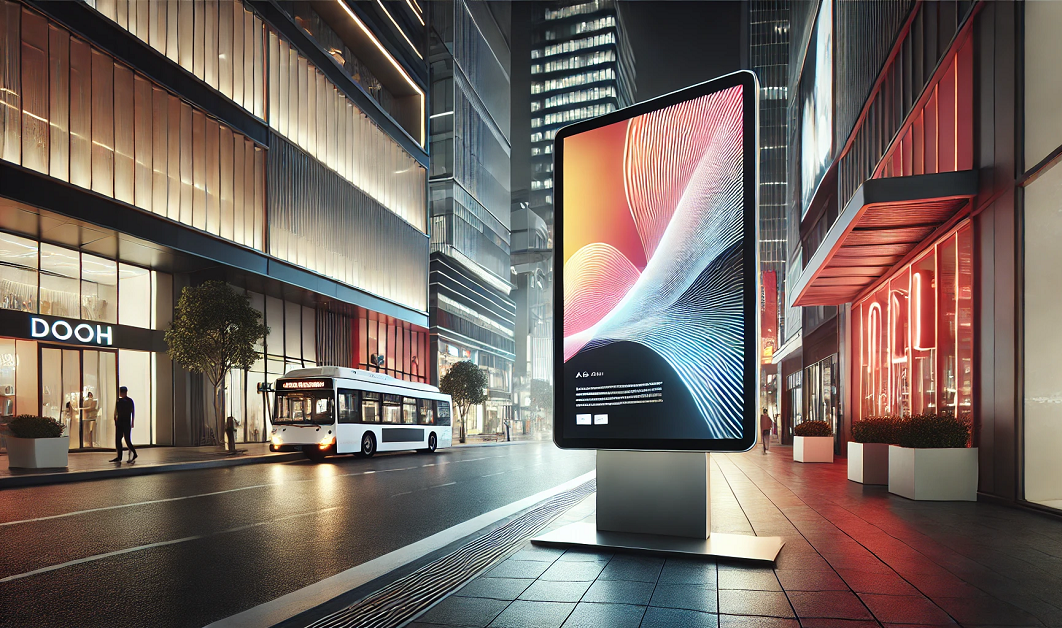Introduction
In the fast-paced world of Digital Out of Home (DOOH) advertising, staying one step ahead is crucial. Brands are no longer satisfied with reactive campaigns—they are turning to predictive solutions to anticipate audience behavior and optimize performance. Predictive Analytics for DOOH is a game-changing strategy that uses data-driven insights to forecast trends, improve targeting, and maximize return on investment (ROI). But how does it work, and why is it becoming indispensable for modern advertisers?
What is Predictive Analytics for DOOH?
Predictive analytics combines historical data, machine learning (ML), and artificial intelligence (AI) to anticipate future trends and behaviors. When applied to DOOH campaigns, it allows advertisers to predict where, when, and how to target their audiences most effectively. By leveraging real-time data and audience insights, predictive analytics helps brands make proactive decisions that drive better results.
For companies like Confirm, which specialize in DOOH reporting and proof of play, predictive analytics offers advertisers tools to fine-tune their strategies with confidence. Confirm’s real-time dashboards and campaign insights create the foundation for predictive models that anticipate performance and audience interactions.
How Predictive Analytics is Transforming DOOH Advertising
1. Anticipating Audience Behavior
Predictive analytics allows advertisers to forecast audience movements and behaviors, ensuring ads reach people when they are most likely to engage. By analyzing location data, time-of-day trends, and historical patterns, brands can place their messages where they will make the greatest impact.
Example: A global coffee chain used predictive analytics to target commuters during morning rush hours. By analyzing foot traffic data near train stations, the campaign anticipated peak audience moments and displayed ads for their breakfast offers. As a result, footfall to their nearby stores increased by 30%.
2. Enhancing Campaign Relevance with Real-Time Adjustments
Predictive models continuously process data to identify emerging trends, allowing brands to make real-time adjustments. Campaigns can adapt to changing conditions such as weather, events, or traffic, keeping ads relevant and timely.
Example: A beverage company implemented a weather-triggered DOOH campaign across urban centers. Predictive analytics anticipated hot weather conditions and adjusted ads to promote cold beverages. This dynamic approach led to a 25% increase in sales during peak summer days.
3. Optimizing Ad Placement and Timing
One of the key benefits of predictive analytics is determining the best locations and times to display ads. By analyzing data points such as dwell times, audience demographics, and screen performance, advertisers can optimize placements for maximum visibility and ROI.
Example: A luxury retail brand leveraged predictive insights to target high-income shoppers in upscale shopping districts during weekends. Ads were displayed at the most impactful times, leading to increased store visits and a measurable lift in sales.
4. Improving Cost Efficiency and ROI
Predictive analytics helps advertisers allocate budgets more effectively by identifying high-performing screens, times, and messaging. This ensures that every dollar spent contributes to achieving campaign goals while reducing wasted impressions.
Example: A car manufacturer ran a DOOH campaign to promote a new electric vehicle. Predictive analytics identified screens near areas with high electric vehicle adoption rates, maximizing engagement with the target audience. The campaign achieved a 40% improvement in ROI compared to previous efforts.
5. Strengthening Multi-Channel Strategies
Predictive analytics doesn’t work in isolation. It integrates with other marketing channels, such as mobile, social media, and online ads, to create a seamless multi-channel experience. By predicting where and when audiences are likely to engage, brands can amplify their messages across platforms.
Example: A fitness app ran a DOOH campaign promoting personalized workouts. Predictive models identified the best-performing locations, while complementary mobile ads targeted users who had interacted with the DOOH screens. The integrated campaign boosted app downloads by 50%.
Implementing Predictive Analytics in DOOH Campaigns
- Gather Quality Data: Start by collecting accurate data on audience behavior, screen performance, and campaign results. Historical and real-time data are the backbone of predictive analytics.
- Leverage AI and Machine Learning: Use advanced technologies to build predictive models that analyze patterns and forecast trends.
- Combine Real-Time Insights: Integrate real-time data triggers like weather, traffic, and events to keep campaigns dynamic and relevant.
- Test and Refine: Continuously test predictive models and refine strategies based on campaign performance and insights.
- Collaborate with Experts: Platforms like Confirm provide advertisers with tools to integrate predictive analytics seamlessly, ensuring campaigns are proactive, data-driven, and optimized for success.
The Future of Predictive Analytics for DOOH
As AI and machine learning technologies evolve, the potential for predictive analytics in DOOH is limitless. Emerging trends include:
- Hyper-Personalization: Ads that are tailored to individual behaviors and preferences using real-time predictions.
- AI-Powered Dynamic Content: Predictive models that adjust ad creatives dynamically to reflect audience moods, weather, or live events.
- Cross-Channel Automation: Integrated systems that predict audience movement across digital, mobile, and DOOH platforms, ensuring a seamless advertising experience.
Example of Innovation: Imagine a retail brand using AI-powered predictive analytics to anticipate shopping patterns during the holiday season. DOOH ads dynamically update to showcase trending products in specific locations, driving in-store traffic and boosting sales.
Conclusion
Predictive Analytics for DOOH is revolutionizing the way brands plan, execute, and optimize their campaigns. By leveraging data-driven insights, advertisers can anticipate audience behavior, improve targeting, and drive greater ROI.
Confirm is at the forefront of this transformation, offering advertisers real-time analytics and campaign tracking tools that form the foundation for predictive strategies. With Confirm’s platform, brands can unlock the power of predictive analytics to stay ahead of the competition and achieve measurable success.
For advertisers looking to future-proof their strategies, embracing predictive analytics is no longer optional—it’s essential. Start exploring the possibilities today and discover how predictive insights can elevate your DOOH campaigns to new heights.
